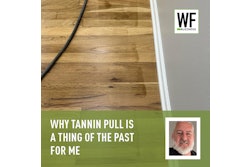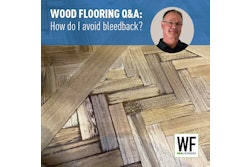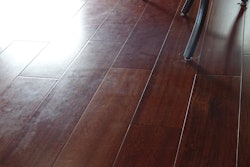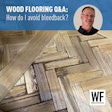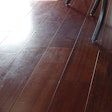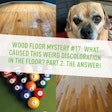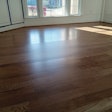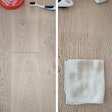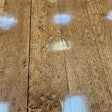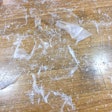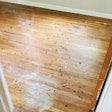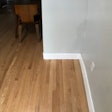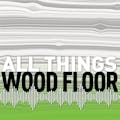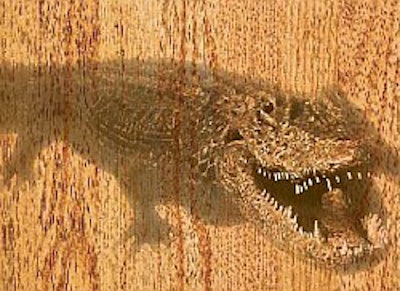

Contractors may encounter a variety of problems when applying finish, but the source of the problem is often not the finish itself. Here are just a few of the most common occurrences — and some tips on how to solve the problem.
Alligatoring
This is a condition in which the finish pulls away from itself, causing ridges in the finish, similar to an alligator's skin. This condition can occur in both water-based and oil-modified finishes. There are many possible causes, including poor wetting of the finish, contamination of the finish, application under cold temperatures, application of a new coat before the previous coat has dried, application of a heavier coat than is recommended, or the use of thinners that cause the finish to dry too quickly. The solution is to screen and recoat after the finish has dried sufficiently.
Applicator Streaks
This condition is usually associated with water-based finishes. It often occurs when an improper spread rate is used — too much or too little finish is applied — or if the finish is not applied evenly. Excessive air movement and abnormally high temperatures can also be responsible for causing the finish to dry too quickly, so that a wet edge of finish is pulled over one that has already dried. The problem can also be caused by applying a satin or semigloss finish that has not been stirred properly. The solution is to screen and recoat after the finish has dried sufficiently.
Bleedback
This condition, associated with stain application, occurs when excess stain seeps from the grain or from the spaces between boards. The most obvious cause is excessive stain application, but low-viscosity stain may also be the culprit. The solution is to wipe off the excess stain and let it dry thoroughly before applying another coat. If finish has already been applied over bleed-back, a complete resand is required.
Discoloration
Some finishes are amber in appearance and will yellow even further over time. Wood lying in direct sunlight will fade over time. These are natural changes — the former condition cannot be prevented, despite the pervasive myth that an oil-modified finish recoated with water-based finish will stop ambering. The latter condition can be prevented by shading the light source. Erratic discoloration can also occur — especially in white oak — if a good sealer is not used. This is called tannin pull.
Excessive & Early Wear
Often, the cause is improper maintenance procedures that have either failed to fully remove grit from the floor's surface, or the introduction of water or strong cleaners. Dog nails, high heels and chair legs also contribute to the problem. Make sure the customer understands proper maintenance procedures, including regular dust-mopping with an approved wood-floor cleaner. (Some cleaners may leave a residue that will prevent good adhesion on are coat.) If recoating is necessary, the owner should pay for it.
Orange Peel
If the surface of the finish has a texture that resembles an orange peel, the problem may have been caused by rolling a finish, which then dries too quickly. When that happens, the texture is "frozen" into place before the finish has a chance to flow out and level. The solution is to screen and recoat.
Peeling, Bubbles, Blisters & Fisheyes
Any of these conditions can mean that the floor was not sufficiently screened between coats of finish, or that soap or some other contaminant substance was not removed before coating. It's also possible that the affected coat is incompatible with the finish or stain previously applied, or a contaminated applicator may be responsible. Problems in the top-most finish coat can be screened and recoated, although severe problems may require complete sanding and refinishing.
Finish Roughness
The cause is often contamination of the finish during dry time, although moisture beneath the floor can also cause the wood grain to rise. If a moisture problem is evident, this must be corrected before rescreening and recoating.
Stains
Spilled water and other liquids, including the residue from incompatible cleaners, can stain finish.Cloudy surface finish can be fixed by lightly rubbing with a proper cleaner and buffing, although some stains require screening and recoating. Strong chemicals should not be used to remove stains.
Sticky Board Syndrome
This occurs when excessive tannic acid in the wood prevents the finish from adhering to the wood. This is most common with oil-modified finishes and with white oak. When one board or several boards scattered throughout the floor will not take stain or finish, the only solution is to repair the floor by replacing the boards.
Uneven Gloss or Sheen Levels
Insufficient stirring of finish prior to application, a contaminated finish applicator and uneven sanding or finish thickness are typical culprits. All require rescreening and recoating. Great care should be taken if using different sheen levels.
Avoiding Trouble
The best problem solution is problem prevention. Here are a few precautions that will help contractors keep finish trouble from their floors.
- Protect containers of finish from extreme temperatures. In particular, water-based finishes may be susceptible to freezing. Some manufacturers will specify that their products can perform properly after a certain number of freeze-thaw cycles, but the best product performance will come from finishes that have been maintained at a moderate temperature.
- Maintain proper job-site conditions. Temperature and humidity should be within the recommended range, or application procedures should be adjusted to account for conditions. For example, extremely hot, dry conditions may cause finishes to dry too quickly. In such cases, approved retarders can be used to slow the drying process. Similarly, cold and humid conditions may cause finishes to dry more slowly — requiring that you allow more time before applying subsequent coats. The job site should also be kept as clean as possible to keep dust and dirt from contaminating the finish.
- Document your jobs. This will help maximize quality control and — in the event a problem does occur — make resolution of the problem more efficient. You’ll want to note job-site conditions (temperature and humidity, as well as whether heating or airconditioning systems were operating);the products used and the batch numbers; and the floor-preparation and application methods employed.
- The best advice in all cases is to carefully follow manufacturers’ application directions, including spread rates and recommended applicators. Finishes are formulated in many different ways, and an application for one will not necessarily produce good results with another.













